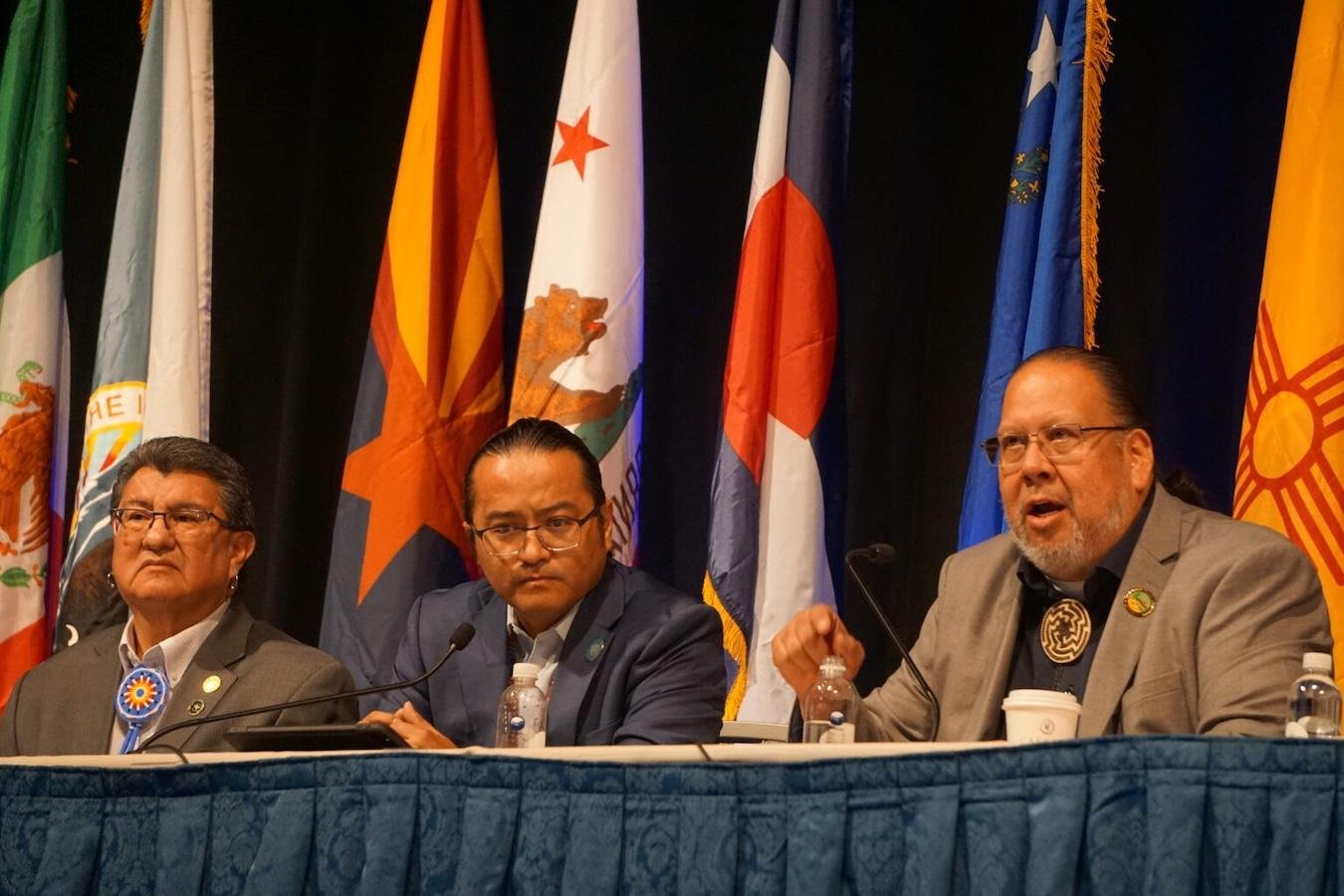Business
Tribes Step Up to Elevate Lake Mead Levels: $5B Federal Water Act Awaits Lame Duck Approval

Since 2021, tribes in the Colorado River Basin have played a critical role in enhancing water supplies in Lake Mead through voluntary contributions, benefiting a population of 25 million people. The prolonged drought and decreasing river flow have empowered these tribes to negotiate more effectively regarding water management, encouraging federal investments for water conservation and infrastructure improvements.
At the recent Colorado River Water Users Association conference, new agreements were established, which aim to conserve an additional 43,000 acre-feet of water in Lake Mead. This quantity is sufficient to meet the annual needs of around 14,000 households. Among the agreements, the San Carlos Apache Tribe will keep 30,000 acre-feet in the reservoir in exchange for $12 million, while the Fort Yuma Quechan Indian Tribe will conserve 13,000 acre-feet for $5.2 million.
These deals build upon previous water-saving initiatives. Last year, the Gila River Indian Community was allocated $50 million from the Inflation Reduction Act after pledging to leave 125,000 acre-feet of water in Lake Mead, contributing roughly two feet of additional water to the reservoir. The community aims to replicate this effort in 2024 and 2025, seeking an extra $100 million to secure enough water for half a million homes.
In September, the Gila River Indian Community also received $107 million for three water conservation infrastructure projects, committing to conserve an additional 73,000 acre-feet of water over the next decade. The potential development of a new reservoir by the Colorado River Indian Tribes, funded by a $5 million study announced by the Bureau of Reclamation, further exemplifies efforts to address water scarcity and enhance tribal water rights.
In addition, $21.5 million has been allocated from the Inflation Reduction Act for the White Mountain Apache Tribe in Arizona to assist in planning a rural water delivery system. The Biden administration has pledged over $6 billion toward water infrastructure in tribal communities, yet future funding remains uncertain pending decisions from the incoming administration regarding unspent funds.
Tribal leaders are advocating for the swift passage of substantial federal water project legislation before the new Congress begins. The proposed $5 billion Northeastern Arizona Indian Water Rights Settlement Act aims to secure water rights for the Navajo Nation, Hopi Tribe, and San Juan Southern Paiute Tribe, which entails significant projects, including a $1.75 billion distribution pipeline.
Navajo Nation President Buu Nygren stressed the importance of this legislation, expressing hope for support from basin states to expedite its approval. However, some states have reservations regarding the implications of the settlement on water usage, a concern that Nygren acknowledged. New Mexico’s representative, Estevan Lopez, indicated that a consensus among states is essential for the settlement to progress.
Given the ongoing tensions between Upper and Lower Basin states regarding river management post-2026, tribal leaders are particularly keen on advancing water settlement bills during the current congressional session. This window is crucial; if the legislation fails now, it will require a complete restart in the subsequent Congress.
Nygren remains optimistic about the potential for Congressional action before the year’s end, urging basin states to unify in support of the settlement. Similarly, Gila River Indian Community Governor Stephen Roe Lewis expressed hope for celebrating the first anniversary of the Northern Arizona settlement next year, regardless of the political turmoil surrounding the upcoming transition of power.

















